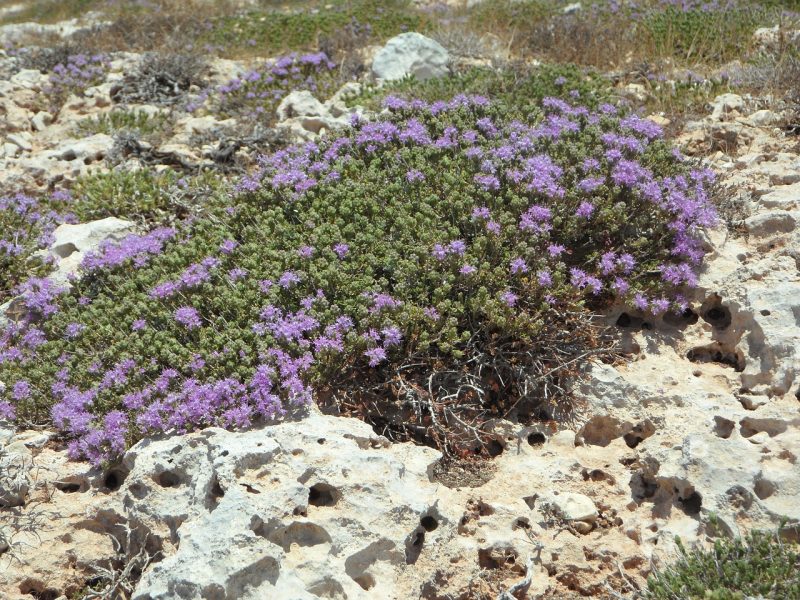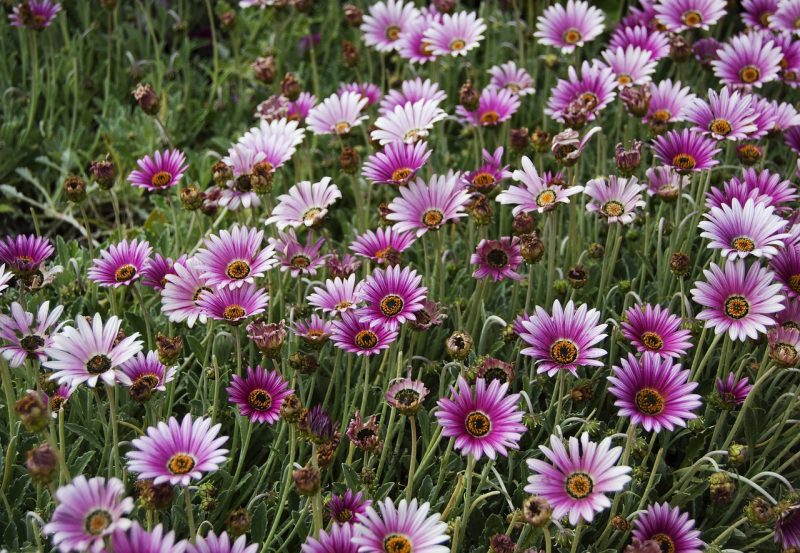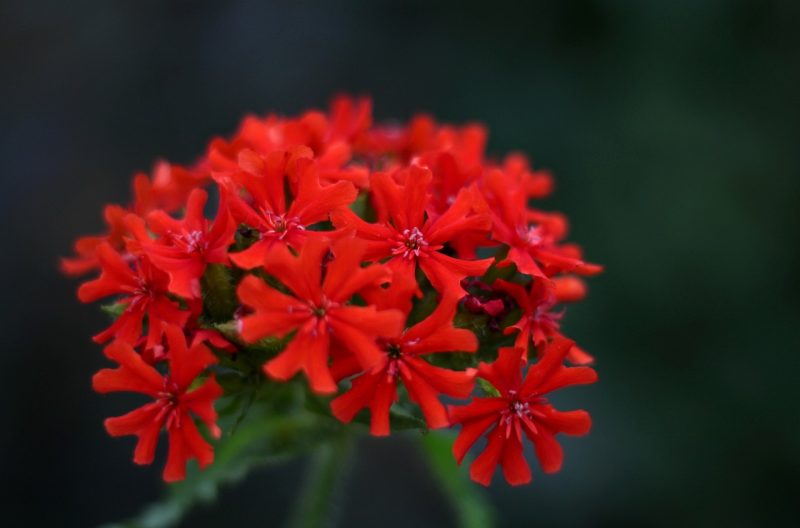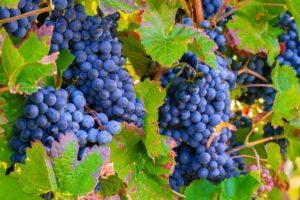Creating a small Mediterranean garden is an inspiring endeavor that allows you to tap into the stunning natural beauty, texture, and aromas found in Mediterranean landscapes.
Flowers
Lavender
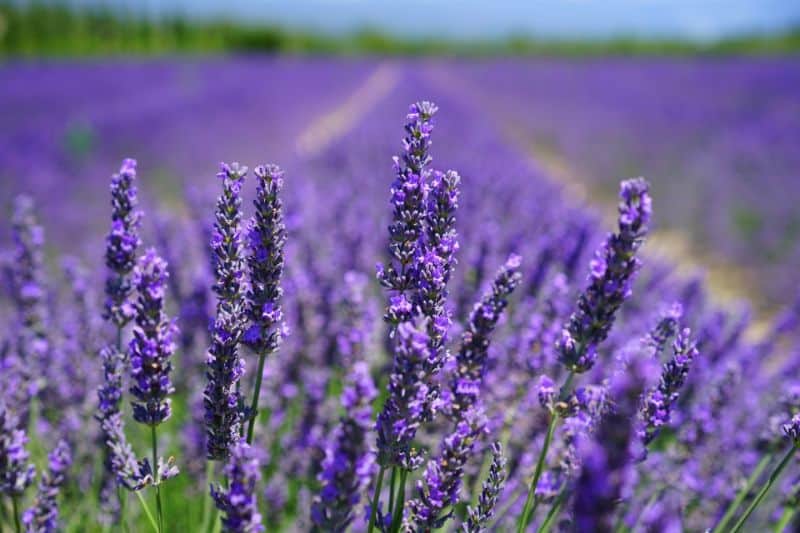
Lavender (Lavandula) is perhaps one of the most iconic flowers associated with the Mediterranean. Its enchanting scent not only attracts pollinators, but it also provides an aromatic experience that soothes and relaxes. When cultivating lavender in your garden, opt for compact varieties such as ‘Hidcote’ or ‘Munstead’ which stay relatively small yet pack a visual punch. This perennial shrub thrives in well-draining soil and full sun, making it perfect for small spaces where air circulation is crucial. Beyond aesthetics, lavender is also prized for its versatility; its flowers can be dried for sachets or culinary usage, and its oil is often used in aromatherapy.
Rosemary
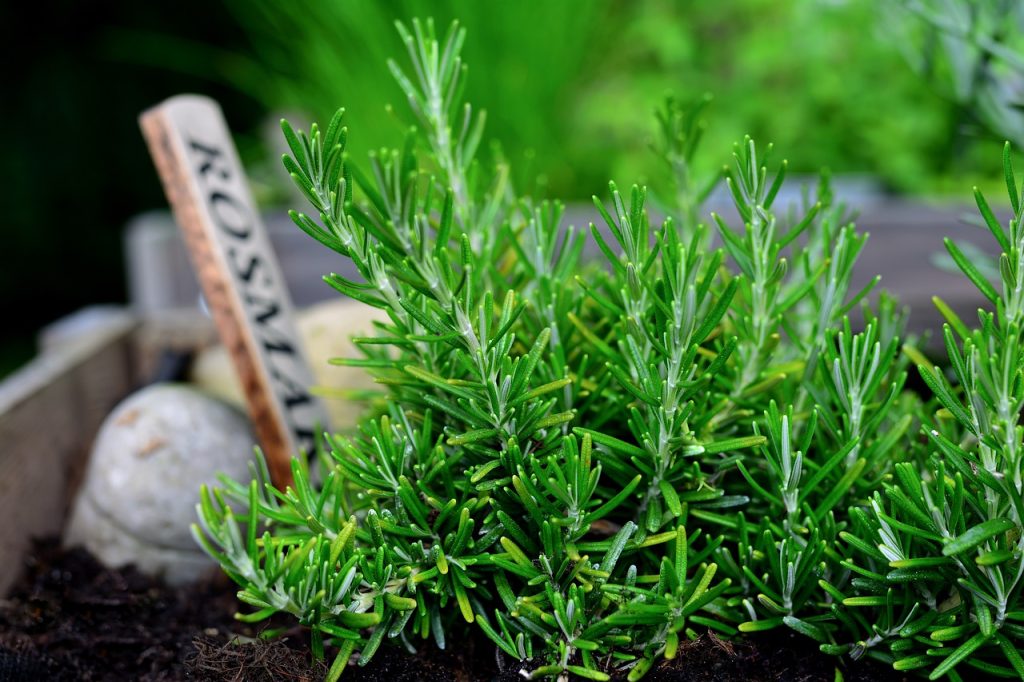
Rosemary (Rosmarinus officinalis) is another delightful plant that encapsulates the essence of Mediterranean gardens. Known for its needle-like leaves and woody stems, rosemary is not just a decorative plant but also a culinary powerhouse. Consider the dwarf varieties, such as ‘Blue Boy’ or ‘Prostratus’, which offer a compact growth habit while being equally aromatic. Rosemary’s adaptability to different soil conditions and its resistance to drought make it a low-maintenance choice for busy gardeners. A small container of rosemary on a patio or balcony can elevate your cooking and offer a fragrant backdrop to outdoor dining experiences.
Phlox
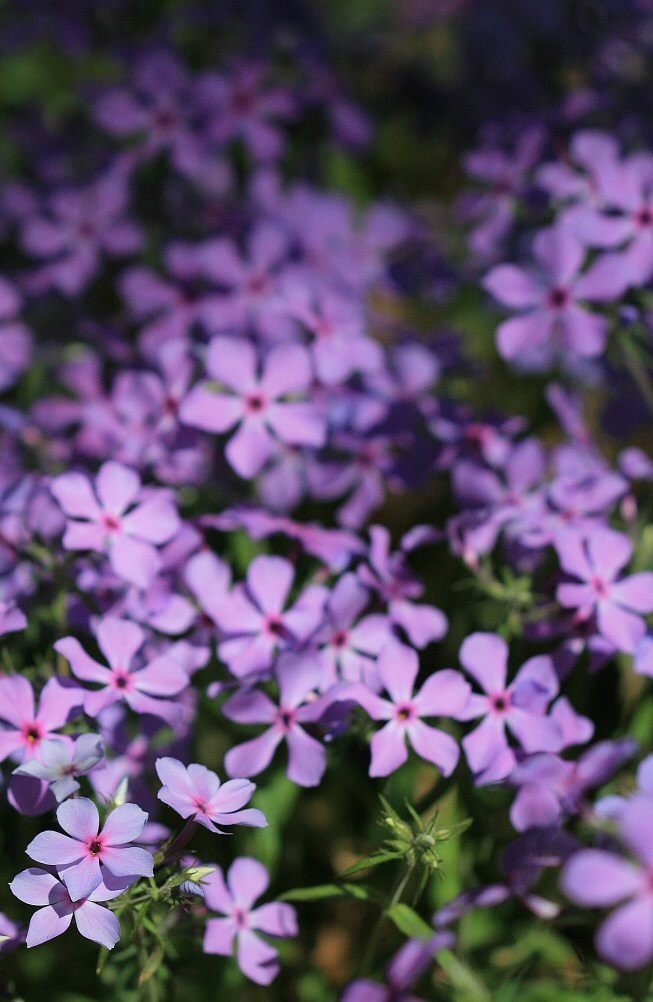
Although not as traditionally Mediterranean, phlox (Phlox paniculata), particularly the creeping varieties, can serve as vibrant ground covers in a small garden. These hardy perennials exhibit colorful blooms that burst forth throughout the summer months, succeeding in attracting butterflies. The adaptability of phlox ensures it can flourish in a variety of conditions, from rich, loamy soil to sandy textures. Their low-growing nature makes them perfect for filling in gaps among larger plants or providing a colorful border. The diverse color palette of phlox, ranging from whites to deep pinks, adds a splash of joy and liveliness to a Mediterranean garden scene.
Rockrose
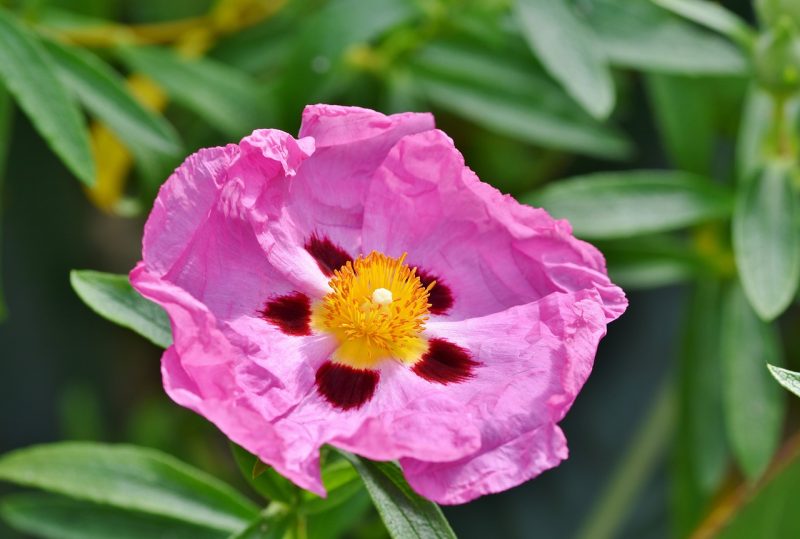
Rockrose (Cistus) is a resilient plant that exemplifies the character of Mediterranean landscapes. Known for its papery flowers and minimal water requirements, rockrose thrives in poor, rocky soils, and can withstand periods of drought. Varieties such as ‘Sunset’ or ‘Smartie’ are compact and provide an explosion of color with their blooms, while also offering attractive evergreen foliage year-round. Their low stature makes them suitable for ground cover or as part of a decorative rock garden. Moreover, rockrose is beneficial for local wildlife, particularly bees, making it an excellent addition for eco-conscious gardeners aiming to promote biodiversity.
Herbs
Thyme
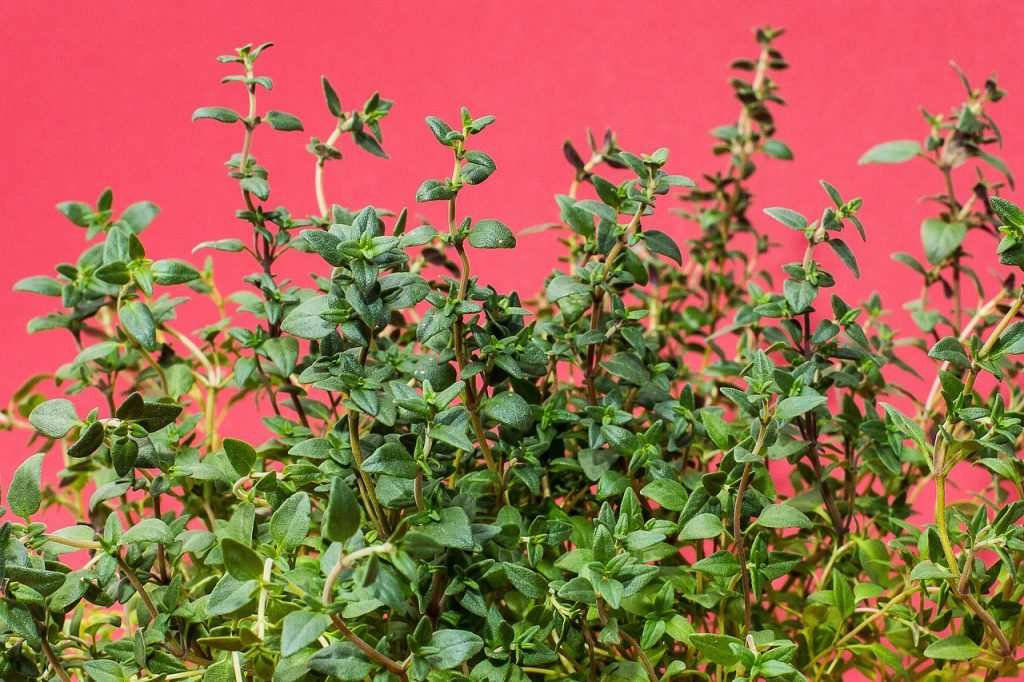
Thyme (Thymus vulgaris) is a quintessential herb that embodies the Mediterranean spirit with its robust flavor and aroma. This low-growing perennial is exceptionally resilient, thriving in well-drained soil, and performing exceptionally well in sunny gardens. For small spaces, consider cultivars like creeping thyme (Thymus serpyllum) which forms a dense mat, making it perfect for edging or between stones in pathways. Beyond its culinary uses in stews, marinades, and roasted vegetables, thyme is recognized for its antibacterial and antiseptic properties, making it a valuable addition to home remedies. The tiny flowers that bloom in summer also attract bees, adding a delightful aspect to garden life.
Oregano
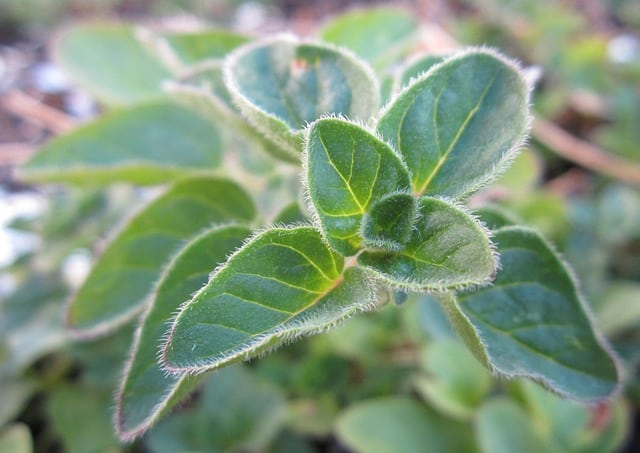
Oregano (Origanum vulgare) is another staple of Mediterranean cuisine that flourishes in small garden settings. Known for its robust flavor, oregano can be readily used in sauces, dressings, and as a seasoning for meat and vegetable dishes. Varieties such as Greek oregano are compact and scented, ideal for pot cultivation or small herb gardens. Oregano thrives in hot, sunny environments and is remarkably drought-tolerant once established. Additionally, its ornamental quality—with small, purple blooms that attract pollinators during the summer—ensures that it serves a dual purpose of beauty and utility in your garden.
Marjoram
Marjoram (Origanum majorana) offers a milder and sweeter flavor compared to oregano, making it a beloved herb in Mediterranean cooking. This perennial herb prefers the warmth of the sun and well-draining soil, flourishing in a garden where it receives plenty of light. Dwarf varieties such as ‘Compact’ are excellent for small spaces and containers, allowing gardeners to enjoy fresh leaves for seasoning roasts and stews. Beyond the kitchen, marjoram is appreciated for its aromatic qualities and calming effect in herbal teas. Its delicate, light green leaves and small white flowers enrich the garden’s aesthetic during its blooming season.
Chamomile

Chamomile (Matricaria chamomilla) is a gentle herb known for its calming properties and delightful fragrance. Although it is often associated with tea, chamomile also serves as a lovely flowering plant in small Mediterranean gardens. The daisy-like flowers not only add visual interest but also attract beneficial insects. This plant thrives in full sun and well-draining soil, making it an ideal companion for other herbs. Growing chamomile can provide a natural remedy for sleeplessness and digestive issues, which emphasizes its place in both the kitchen and medicine cabinet. Additionally, chamomile can be easily cultivated in a small part of the garden or in pots, adding accessibility to its benefits.
Hyssop
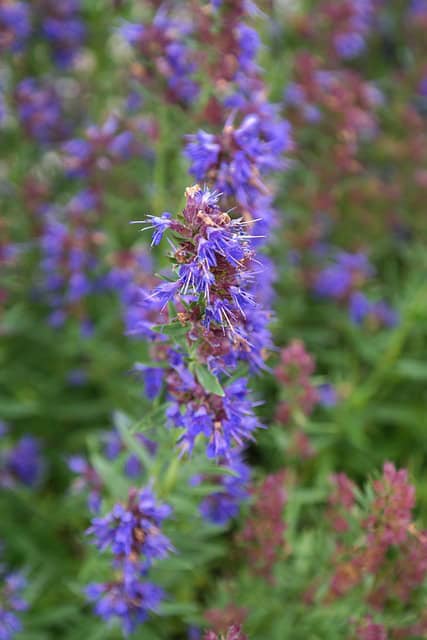
Hyssop (Hyssopus officinalis) is an aromatic herb that thrives in Mediterranean climates and offers a unique flavor and various health benefits. Known for its upright habit, hyssop produces blue to purple flowers that bloom in summer, adding vertical interest to gardens and attracting pollinators. This herb prefers well-drained soil and full sun, showcasing its resilience as it withstands periods of drought. In culinary use, hyssop complements salads, soups, and meat dishes with its slightly minty flavor. Furthermore, hyssop has been used since ancient times for its medicinal properties, which include respiratory and digestive health benefits, pairing beauty with functionality in the small garden.
Succulents
Sedum

Greek sedum (Sedum spathulifolium), also known as stonecrop, is a stunning succulent that thrives in the Mediterranean landscape. This low-growing perennial features fleshy, plump leaves that can vary in color from vibrant green to shades of red and purple, depending on the growing conditions. Greek sedum works well in rock gardens, atop walls, or in containers where it can spill over the edges, creating a beautiful cascading effect. It thrives in poor, well-draining soils, requires minimal watering, and can tolerate full sun, making it perfect for the small garden that wants vibrant color without demanding care. Besides its ornamental qualities, Greek sedum is also drought-resistant, making it an ideal choice for eco-conscious gardeners looking to conserve water.
Shrubs
Dwarf Olive Tree

The dwarf olive tree (Olea europaea ‘Little Ollie’) captures the elegance and essence of Mediterranean landscapes in a small form. It typically reaches a height of about 3 feet, making it perfect for limited spaces, patio containers, or as an accent in garden beds. Dwarf olives offer glossy, silvery-green leaves with a stunning backdrop of white blooms in spring, followed by small, often non-fruiting olives. Strongly associated with Mediterranean culture, the olive tree symbolizes peace and endurance. It thrives in sunlight and well-drained soil, requiring little water once established, which makes caring for it achievable even for novice gardeners. Beyond its aesthetic appeal, the dwarf olive tree is also a conversation starter, evoking tales of the Mediterranean’s rich history and culinary delights.
Boxwood
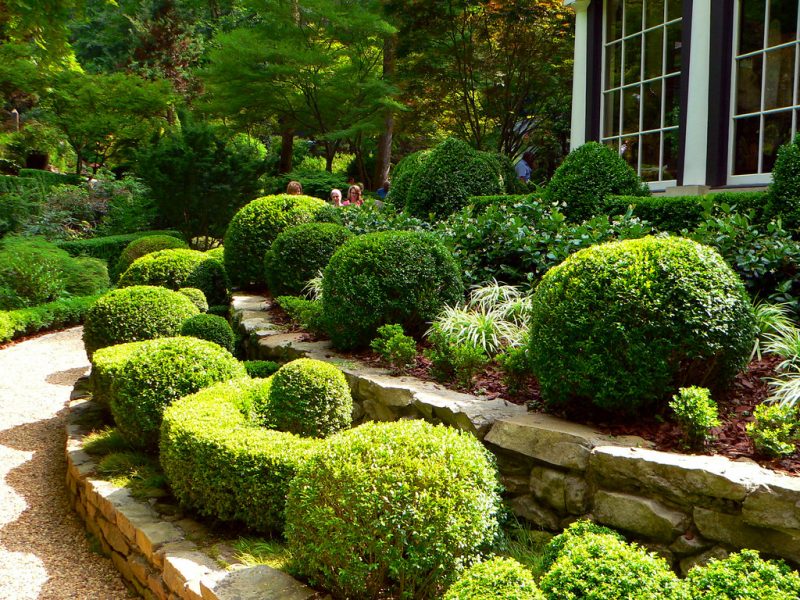
Boxwood (Buxus) is a classic choice for small Mediterranean gardens, renowned for its versatility and timeless appeal. This evergreen shrub can be pruned into various shapes, making it a favorite for formal gardens and borders as well as more casual arrangements. Boxwood is available in dwarf varieties like ‘Green Mountain’ or ‘Morris Midget,’ which stay compact and manageable. Its dense foliage provides year-round structure and greenery, serving as an excellent backdrop for colorful flowering plants. Beyond their practical uses in creating hedges or borders, boxwoods are ideal for delineating spaces in small gardens, serving as living sculptures that enhance the overall landscape aesthetics. Importantly, boxwood’s resilience to drought once established ensures its adaptability in Mediterranean climates.
Ground Covers
Creeping Thyme
Creeping thyme (Thymus serpyllum) is an enchanting ground cover that offers both beauty and utility in the small Mediterranean garden. This hardy perennial features tiny, fragrant leaves and delightful purple flowers that bloom in early summer, creating a vibrant tapestry of color while also attracting bees and butterflies. What makes creeping thyme particularly appealing is its ability to thrive in poor, rocky soils, making it a fantastic choice for dry, sunny areas or pathways. Its drought-resistant nature allows it to withstand periods of heat and dryness, requiring little to no irrigation once established. Beyond its ornamental qualities, creeping thyme can also tolerate light foot traffic, making it suitable for garden paths or as a living carpet underfoot.
Native Mediterranean Plants
Spanish Daisy
The Spanish daisy is a striking perennial that brings a fresh burst of color to Mediterranean gardens. With its cheerful, daisy-like flowers in shades of white, pink, and yellow, this plant thrives in full sun and well-draining soil. Spanish daisies bloom profusely in late spring through summer, attracting a variety of pollinators, including bees and butterflies, which are essential for sustaining garden biodiversity. They are particularly effective in rock gardens, borders, or as a ground cover, offering excellent erosion control on slopes. This hardy plant is drought-resistant once established, requiring minimal watering, which aligns perfectly with the sustainable gardening practices characteristic of Mediterranean landscapes.
French Lavender
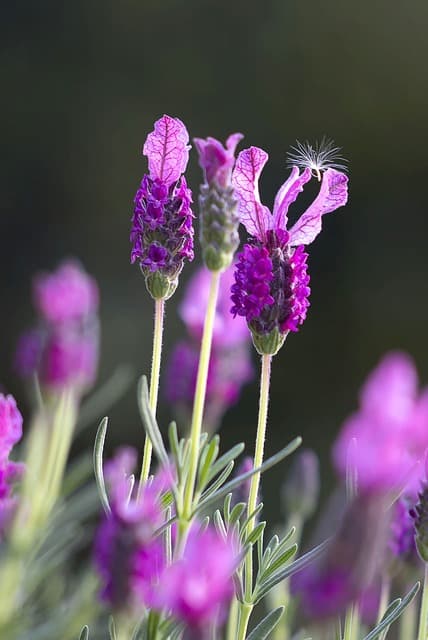
French lavender (Lavandula stoechas) is a fragrant and visually captivating addition to small Mediterranean gardens. Renowned for its striking purple flower spikes, this herbaceous perennial blooms from late spring to early summer, filling the air with its signature aromatic scent. French lavender thrives in full sun and well-drained, sandy, or rocky soil. Its compact growth habit makes it perfect for small spaces, whether planted alone or alongside other Mediterranean herbs and flowers. Beyond its beauty, French lavender is highly versatile; it can be used in culinary applications, homemade sachets, and natural remedies, contributing both charm and utility to your garden. Moreover, this plant is excellent for attracting pollinators, enhancing the overall health of your garden ecosystem.
Italian Cypress
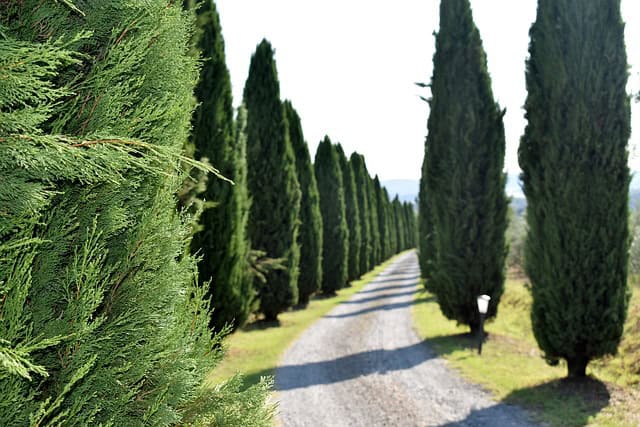
The Italian cypress (Cupressus sempervirens) stands tall and proud, serving as a striking focal point in any small Mediterranean garden. Characterized by its narrow, columnar form and dark green foliage, this evergreen tree can reach heights of up to 50 feet, making it an impressive choice for vertical interest in limited spaces. Italian cypress is drought-tolerant once established, making it suitable for the sun-soaked Mediterranean climate. It is often used to create elegant hedges or borders, providing privacy and structure while also serving as an eye-catching architectural element. The tree’s resilience against various pests and diseases further enhances its appeal in garden design. Additionally, its tall stature can act as a windbreak, providing shelter for smaller plants and creating a microclimate in your garden.
Additional Options
Cretan Pot Marigold
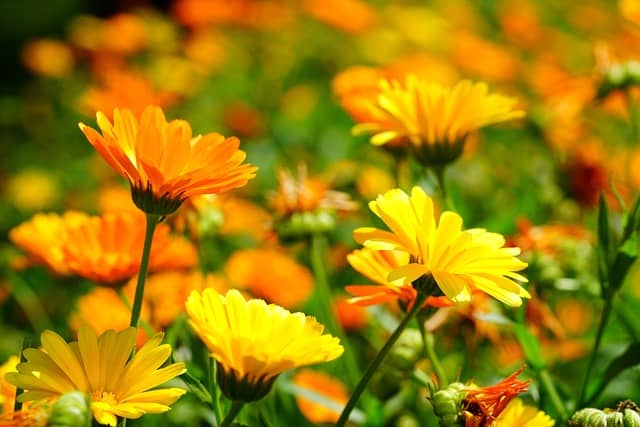
The Cretan pot marigold (Calendula officinalis) is a vibrant and cheerful annual that thrives in Mediterranean gardens. With its bright orange and yellow blossoms, this decorative flower brings a splash of color and lives up to its namesake by favoring sunny positions and well-drained soil. Beyond its ornamental appeal, the Cretan pot marigold is rich in medicinal properties, traditionally used to promote healing and soothe skin irritations. Its flowers are also edible, adding flair to salads and garnishes. With a relatively low demand for water once established, this plant embodies the drought-tolerant ethos of the Mediterranean, making it an ideal choice for sustainable gardening.
Maltese Cross
Maltese cross (Lychnis chalcedonica) is another enchanting addition to the Mediterranean garden, known for its striking red, star-shaped flowers that bloom in clusters during the summer months. This perennial thrives in full sun and prefers well-drained soils, making it well-suited for rocky or clay-like terrains often found in the Mediterranean. A key feature of Maltese cross is its ability to attract a variety of pollinators, including bees and butterflies, which enhances pollination in your garden. The plant’s slightly tall stature makes it perfect for mixed borders or as a backdrop in flower beds, providing a stunning contrast against lower-growing ground covers and other perennials. This plant is both dramatic and minimal in care requirements, embodying the essence of Mediterranean resilience.
Greek Yarrow
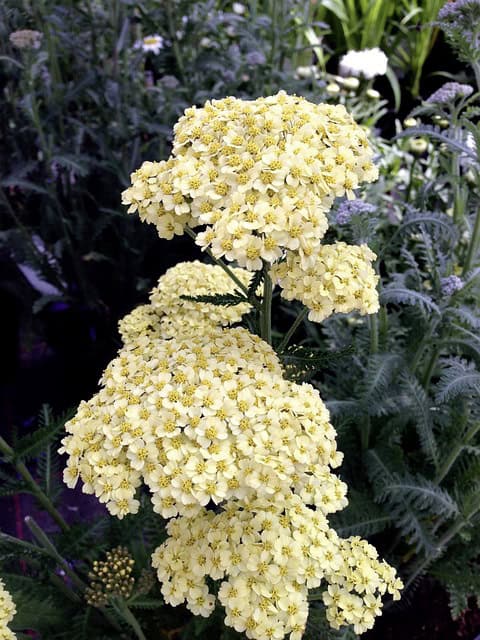
Greek yarrow (Achillea fraxinifolia) is a hardy perennial that offers not only aesthetic beauty but also valuable biodiversity benefits. With its fern-like foliage and dense clusters of creamy white to yellow or pink flowers, Greek yarrow adds texture and charm to garden beds. This plant is well-adapted to the dry Mediterranean climate, thriving in poor, well-draining soils and full sun. Known for its medicinal qualities, yarrow has been used for centuries in herbal remedies, and its dried flowers can be used in arrangements or crafts. Additionally, Greek yarrow is effective in attracting beneficial insects such as ladybugs and lacewings, contributing to a balanced garden ecosystem.
Corsican Mint
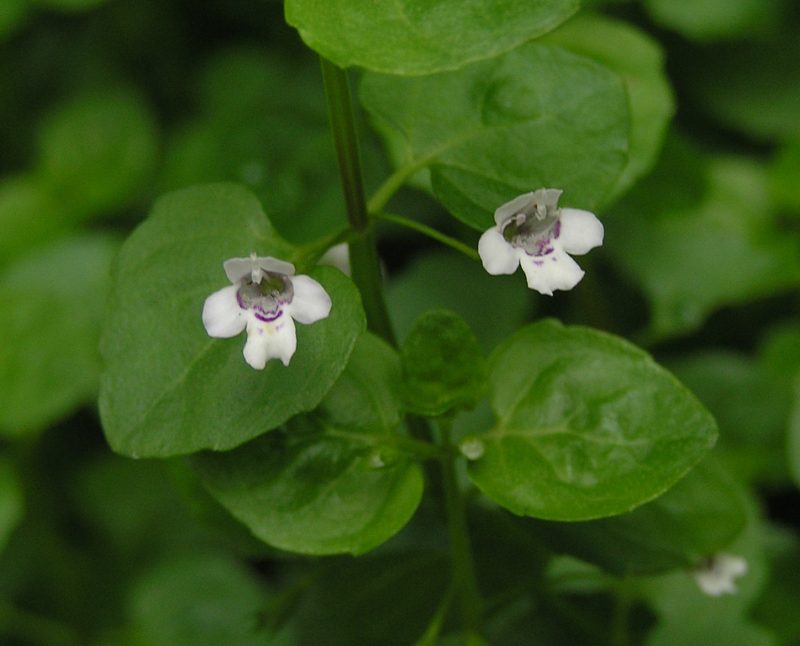
Corsican mint (Mentha requienii) is a fragrant ground cover that excels in small Mediterranean gardens, particularly in shady or partially shaded areas. This perennial herb produces tiny, delicate green leaves that emit a lovely mint aroma when brushed against or stepped on. Its compact growth habit makes it ideal for use between stepping stones, pathways, or as an edging plant in garden beds. Corsican mint thrives in moist, well-drained soil but can tolerate some drought, making it a versatile choice. Beyond its ornamental role, this aromatic herb can be used in culinary applications, such as flavoring desserts, salads, or beverages. Its ability to attract pollinators adds to its value as a multifunctional garden plant.




